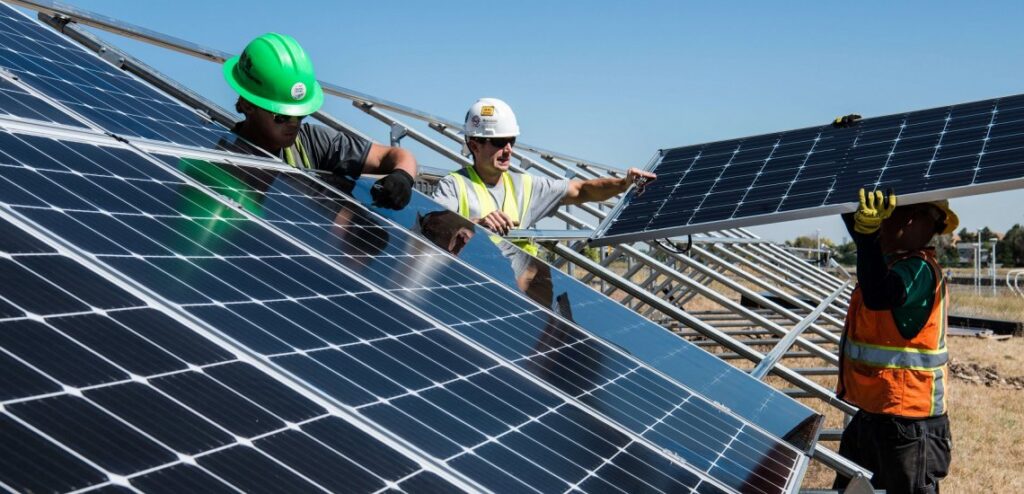New global guidelines: a nature-friendly transition to renewable energy

BirdLife has joined forces with big voices in the conservation and energy sectors to develop a new set of global renewable energy guidelines. These best-practice steps outline how to keep nature safe as the world moves to more sustainable energy sources.
By Mireia Peris
It’s becoming increasingly clear that our planet is at a crucial environmental crossroads.Greenhouse gas emissions – especially carbon dioxide generated from burning fossil fuels – have disrupted the global climate system. Alongside this, deforestation and land degradation are destroying the very habitats that could absorb this carbon. Change is needed – and quickly. According to the 2018 IPCC special report, in order to limit global warming to 1.5°C and avoid the most catastrophic effects of climate change, CO2 emissions need to decrease by about 45% by 2030, reaching net zero around 2050.
Renewable energy plays a critical role in addressing this pressing challenge, with the potential to provide more than enough power to meet our future needs. Recent analysis by the International Renewable Energy Agency shows that renewable energy, including wind and solar, is the most effective and readily available solution for reversing rising CO2 emissions. However, it is critical that this expansion of solar and wind power does not lead to further biodiversity loss or ecosystem damage. We need to be aware of the unintended consequences on nature and people that renewable energy production, transmission and distribution can lead to, when it is not adequately managed.
A transition to renewable energy which both avoids harm and contributes to nature conservation is, therefore, essential, but can only happen with the support of all relevant decision makers at every stage of planning and implementation.
To address these challenges, BirdLife International has joined the IUCN and The Biodiversity Consultancy – in collaboration with other partners from the conservation and energy sectors – to support and develop new global guidelines: Mitigating biodiversity impacts associated with solar and wind energy development.
These guidelines bring together a wide range of literature, experiences and case studies from the wind and solar energy sectors, and will provide good practice examples for project developers. The guidelines also highlight the fundamental importance of the mitigation hierarchy – most importantly, averting problems early on in the project planning process by locating infrastructure where it does least harm to biodiversity.

“BirdLife International insists that urgently reducing our dependence on fossil fuels and transitioning to a renewable energy-led future must ensure that technologies such as wind and solar have the right safeguards in place to avoid negative impacts on key areas of biodiversity and vulnerable species. The once-in-a-lifetime opportunity we have to build back better should guarantee we don’t undo the progress we make on one hand with damage done by the other,” states Patricia Zurita, BirdLife International’s CEO.
As the world moves to more sustainable energy sources, developers and financial institutions need tools to ensure the transition is nature-sensitive. This is an area where BirdLife is particularly active across our global Partnership. We frequently work with financial institutions and developers, putting forward suitable safeguards and investment activities that ensure biodiversity is incorporated in lending decisions and projects on the ground. We use our knowledge and scientific expertise to develop tools such as the Soaring Bird Sensitivity Mapping Tool, which highlights sensitive habitats and species, driving home the importance of strategic spatial planning as a first step for development projects.
BirdLife is also part of the Convention on Migratory Species Energy Task Force (ETF) – a platform that unites governments, multilateral environmental agreements, investors, NGOs and the private sector in reconciling renewable energy developments with the conservation of migratory species. One of the ETF’s main roles is to help developers carry out good practice guidelines globally, publishing guidance and tools outlining how to minimise their impact.
This moment presents a unique opportunity to drive transformative change at multiple scales and with multiple stakeholders, and to ensure that nature doesn’t get left behind as renewable energy advances.
Join the free online launch event for the new guidelines here.